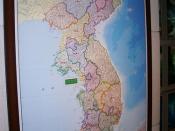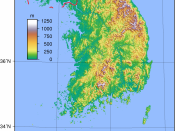South Korea is a developed country which extends 1,100 km from the mainland of Asia, with Japan to its right, China to its left and North Korea to its North. The local climate is relatively temperate, with rain heavier in summer during a short rainy season (monsoon), and winters are very cold and frosty. South Korea's capital and largest city is Seoul in the northwest, with other major cities such as Busan, which act a connection to the neighbouring countries.
The current population is 47.9 million, with expected decline in population by 2050. Currently there are 491 people to every square kilometre and it is the 25th most populated country in the world. Compared to Djibouti, the population is about 7 times larger, however, by the year 2050, South Korea's population will only be 4 time bigger than Djibouti's. The birh rate is quite low, as more and more women do not want to settle down at an younger age and have children, as South Korea's economy is strongly improving and more job opportunities ca be found.
However, Djibouti's birth rate is about 3 times South Korea's. The Death rate is relatively in the same ratio, with Djibouti at 19 and South Korea at 5 death per 1000 people every year.
Infant mortality is quite low, as the technology is higly professional compared to all theother countries and therefore infant death are quite uncommon. This is the opposite to Djibouti, where hospitals are scarce and many children end up dying before the age of 5. This also relates to the total fertility rate, where South Korean women only have an average of 1.3 children in their whole lifetime. This is also again due to the fact that South Korea can offer so much more life opportunities...


